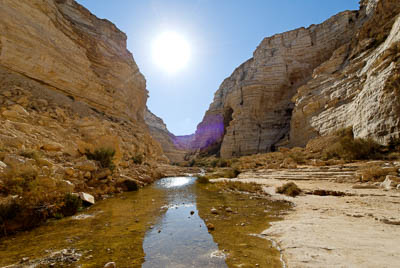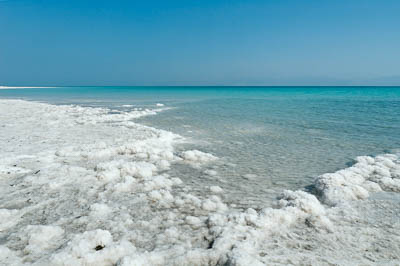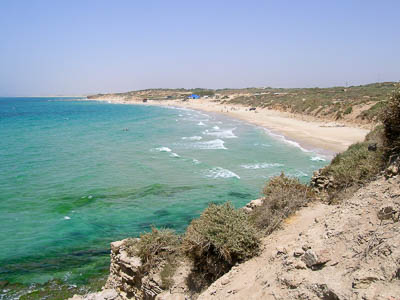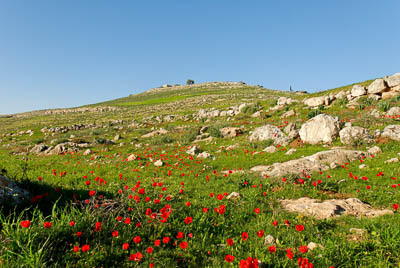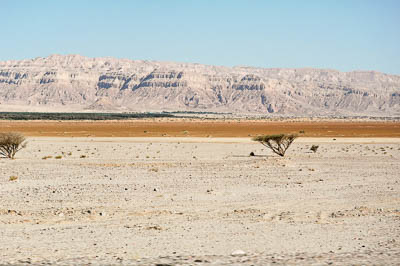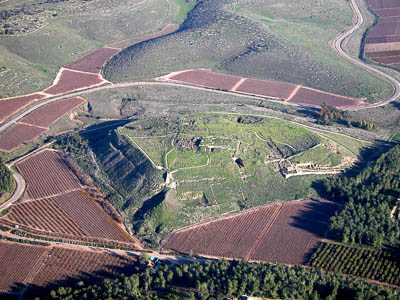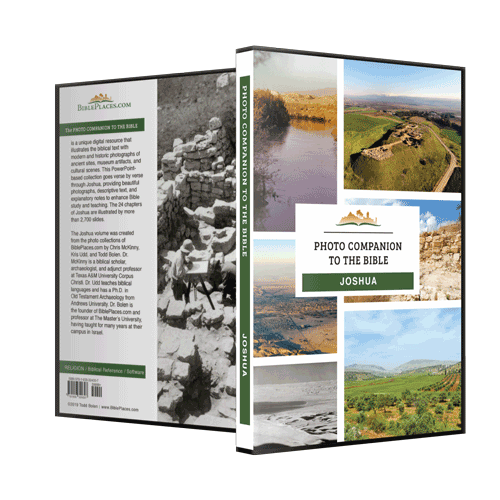. . . unto the border of Edom, even to the wilderness of Zin (Joshua 15:1).
The description of Judah’s border begins at the southern edge, with the wilderness of Zin. The border between Canaan and Edom went through here, probably because its prominent drainage system makes for a natural boundary. Nahal Zin is the largest wadi that begins in the Negev; it stretches for 75 miles (120 km) and drains 600 square miles (1550 sq km). Today visitors enjoy walking through this canyon, part of the Ein Avdat National Park.
